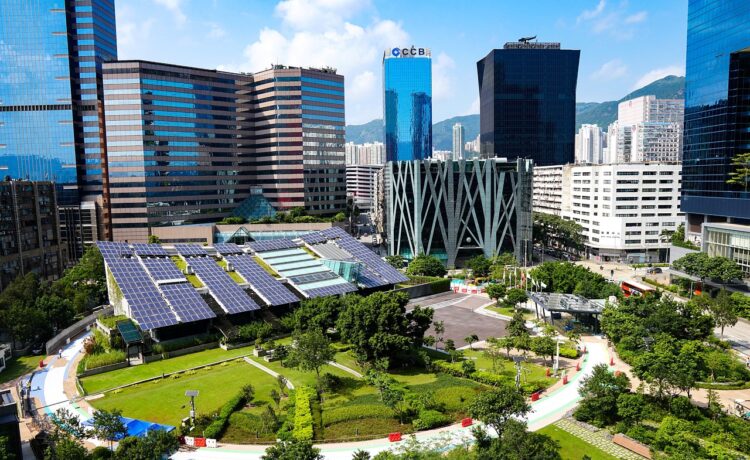The production industry is a pivotal factor in its history, wherein the need for sustainable practices has by no means been greater important. As urbanization speeds up and herbal sources dwindle, it’s crucial to reconsider how we build our systems. Embracing sustainable substances and revolutionary layouts is not simply beneficial for the surroundings but is also a necessity for creating livable areas for future generations.
Understanding Sustainable Materials
Sustainable substances are those which can be renewable, recyclable, and sourced responsibly. They include loads of alternatives such as bamboo, reclaimed wood, recycled metal, and even biodegradable materials. The blessings of using these materials increase past simple environmental blessings; they also result in more suitable power performance and decreased universal prices over a long time.
For example, bamboo is a splendid alternative to conventional wood because of its rapid increase in cycle and power. Similarly, reclaimed timber no longer most effectively provides character to a space however also helps in reducing waste through repurposing materials that could otherwise contribute to landfills. In addition to those, materials like recycled steel, particularly Galvanized Steel Coil for Sale, are gaining traction for their sturdiness and minimal environmental impact. Utilizing such materials not only facilitates in preserving assets but additionally contributes to the general sustainability of a task.
Innovative Design Principles
The integration of nature into structure is an essential issue of sustainable layout. Biophilic layout, which emphasizes human connections to nature, is increasingly being incorporated into modern-day structures. By maximizing herbal light, optimizing ventilation, and creating green outdoor spaces, buildings can foster a healthier environment for their occupants.
Another extensive trend in the sustainable layout is adaptive reuse, which includes repurposing present structures. This approach minimizes waste and preserves the historic price of a building, reworking it into a functional area at the same time as retaining its architectural integrity. By deciding to adapt in place of demolition, architects can contribute to a extra sustainable city landscape.
Sustainable Construction Techniques
Incorporating sustainable substances and layout standards is crucial, however, enforcing green creation strategies is equally crucial. Green building certifications like LEED (Leadership in Energy and Environmental Design) provide a framework for assessing the sustainability of buildings. These certifications encourage builders to prioritize strength efficiency, water conservation, and the usage of sustainable substances, ensuring that new buildings have a minimal environmental footprint.
Another modern creation technique gaining recognition is modular creation. This method involves prefabricating constructing sections in a factory setting, which now not only reduces waste but also shortens production time. By creating components off-website, builders can make sure better excellent, and much less environmental disruption all through the development process.
Case Studies and Examples
Successful initiatives that exemplify sustainable materials and layout have become extra common globally. One first-rate instance is the Bosco Verticale in Milan, Italy, which capabilities two residential towers protected by over nine,000 trees. This innovative design not only effectively complements the classy appeal of the homes but also contributes to urban biodiversity, lowering air pollutants and supplying a natural habitat for birds and insects.
Closer to domestic, the sustainable construction movement in Oman is on the rise, with various local architects and firms main the manner. Projects that incorporate conventional design elements with cutting-edge sustainable practices are not only maintaining cultural heritage but additionally paving the manner for eco-friendly construction inside the region.
The Role of Technology
Technology plays a vital role in advancing sustainable building practices. Innovations along with three-D printing and clever substances are revolutionizing the development enterprise. 3-D printing allows for the creation of complex designs at the same time as minimizing waste, whilst smart substances can adapt to environmental adjustments, enhancing a building’s electricity efficiency.
Digital tools have also emerged to facilitate sustainable layouts. Software that fashions power intake, material efficiency, and useful resource control can drastically enhance decision-making during the design phase. By leveraging those technologies, architects and developers can create systems that are not only visually stunning but also environmentally accountable.
Challenges and Solutions
Despite the benefits, there are demanding situations for adopting sustainable substances and designs. Perceptions concerning charges and availability frequently deter builders from embracing green options. However, the long-term savings related to strength performance and decreased preservation can outweigh preliminary investments.
To triumph over those obstacles, collaboration among stakeholders is vital. Government incentives can sell sustainable construction practices, while public consciousness campaigns can educate purchasers about the advantages of inexperienced construction. By fostering a lifestyle of sustainability, the construction enterprise can pass closer to an extra responsible future.
Future Trends
The destiny of sustainable creation is vibrant, with emerging materials and layout philosophies on the horizon. Bio-primarily based materials, nanotechnology, and self-healing concrete are just a few improvements poised to alternate the enterprise panorama. These advancements now not handiest cope with environmental issues but also enhance the overall performance and longevity of buildings.
Additionally, the concept of a round financial system in construction is gaining traction. This method focuses on the continuous reuse and recycling of materials, consisting of FF&E and OS&E, considerably lowering waste and selling sustainability at some stage in the lifecycle of a construction.
Conclusion
As we move ahead, the construction enterprise should prioritize sustainable substances and layouts to ensure a healthier planet for future generations. By embracing innovative practices, we will create systems that now not most effectively serve their intended purpose however additionally harmonize with the environment. The transition to sustainable production isn’t always just a choice; it’s vital. By selecting to spend money on sustainable materials and practices, we are constructing the future—one that is resilient, efficient, and green.













